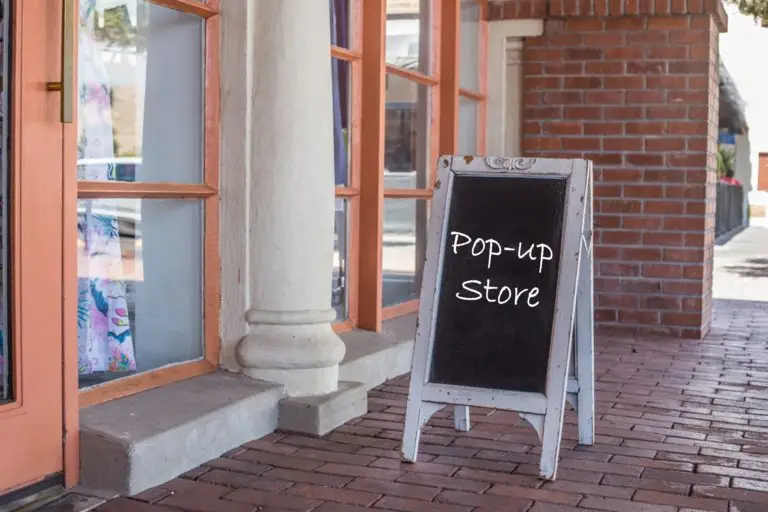Shoe manufacturer Giesswein has been successful with its online strategy for some time now. However, the company does not want to do without bricks-and-mortar retail. In addition to attractive and expensive high-frequency locations, the company is also considering more affordable pop-up stores in a less visible and quieter environment, often referred to as C or 1C locations . Stores in these locations rely primarily on regular customers.
Closely linked to this is the issue of footfall . We show what characterizes a 1C location.

Suddenly there: pop-up stores
The Giesswein brothers from the beautiful Tyrol have specialized in the craft of footwear, and in particular also process wool, for example from merino sheep. According to the company, it is a third-generation family business that applies high quality standards when selecting the basic materials. There are countless qualities of wool, but only the finest make it into production. With more than 700,000 satisfied customers, the company has created a strong brand.
The shoe manufacturer has had a functioning online strategy for some time now, but it does not want to do without bricks-and-mortar retail.
"Brick-and-mortar retail has a future, but not every concept," Markus Giesswein is quoted as saying in Handelsblatt. The company could imagine establishing flagship locations in high-frequency locations - also to increase brand awareness - or opening pop-up stores in C-locations at a much lower price.
Pop-up stores are usually stores that are opened at short notice and on a temporary basis. The term is derived from "to pop up = to suddenly appear". Vacant smaller business premises, galleries or sometimes even warehouses are often used for this purpose. After a certain period of time, the stores close again. The range of goods is reduced and usually corresponds to that of a boutique, but can also resemble a warehouse sale. Rents are usually manageable.
It is rare to find a pop-up store in the main pedestrian zones, as vacancies in very good locations are often characterized by conversion work and direct re-letting, and would also mean high rents. In contrast, there are more opportunities away from the expensive locations, in the secondary and peripheral zones of city centers or district centers.
1C location for regular customers
Descriptions such as 1A, 1B and 1C locations are often given for the location of commercial properties in city centers. There is no uniform scientific definition for this. What is clear is that 1A locations generally refer to the cream of the crop in city centers with high to very high footfall. Depending on the city, with more than 10,000 passers-by per hour on good days. This is where retail sales are correspondingly the highest.
The adjacent streets with low footfall are usually referred to as 1B locations, which from the retailer's point of view is more like the 2nd Bundesliga. According to Wikipedia, these locations only achieve around 40-75% of the frequency of the top locations. The 1C location falls even further behind with a footfall of less than 40% of the A location.
However, a 1C location is by no means a shabby side street with unattractive stores. Rather, it can also refer to shady squares or alleyways away from the hustle and bustle, which often have specialized retailers with a correspondingly regular clientele: Pet stores, seed shops, hat stores. However, many long-established operators often cannot find a successor and give up. Temporarily vacant business premises therefore offer opportunities for pop-up stores. The Giesswein target group (more outdoorsy) certainly appreciates the relative peace and quiet in these locations.
The Nexiga Pedestrian Frequency Atlas is based on detailed knowledge of where which traffic generators are positioned. Retail, gastronomy and also relevant service providers that attract customers or visitors are included in the modeling. Information on street types (e.g. pedestrian zones), parking lots and train stations is also included. More than 300,000 locations of the 800 leading chain stores from Aldi to Zara Home, the Nexiga Topshops, have a particular influence on the model.
